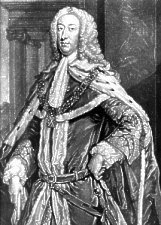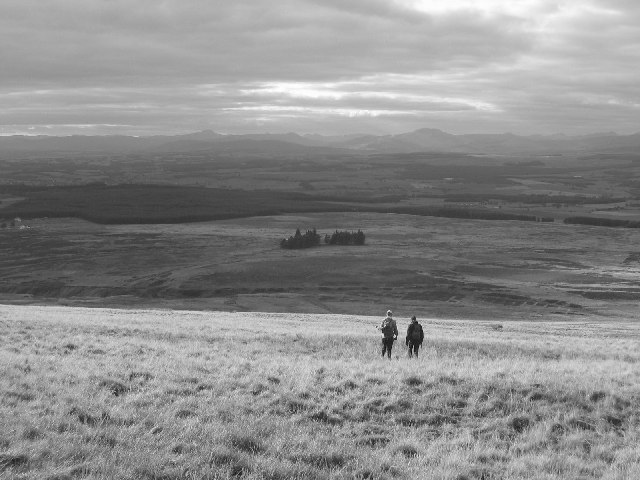|
Tullibardine
Tullibardine is a location in Perth and Kinross, Scotland, which gives its name to a village, a castle and a grant of nobility. The village of Tullibardine is a settlement of approximately forty dwellings about southwest of Perth. It lies in the parish of Blackford, and the nearest town is Auchterarder, to the south. Tullibardine Castle was a medieval fortification on a low eminence west of the village. Little is known about it and it no longer exists. The castle was built by the Clan Murray in the late 13th to early 14th century, after it had extended its holdings south from its heartland in Morayshire. The castle predates the nearby chapel, which is dated to 1446. The castle was dismantled in 1747, following the Jacobite rebellion, and was completely demolished in 1833. Tullibardine Chapel was built in the 1446 by David Murray of Tullibardine as a family chapel and burial site, and members of the Murray family were buried there until 1900. The chapel has remained unaltered ... [...More Info...] [...Related Items...] OR: [Wikipedia] [Google] [Baidu] |
Earl Of Tullibardine
Duke of Atholl, named for Atholl in Scotland, is a title in the Peerage of Scotland held by the head of Clan Murray. It was created by Queen Anne in 1703 for John Murray, 2nd Marquess of Atholl, with a special remainder to the heir male of his father, the 1st Marquess. , there were twelve subsidiary titles attached to the dukedom: Lord Murray of Tullibardine (1604), Lord Murray, Gask and Balquhidder (1628), Lord Murray, Balvany and Gask (1676), Lord Murray, Balvenie and Gask, in the County of Perth (1703), Viscount of Balquhidder (1676), Viscount of Balquhidder, Glenalmond and Glenlyon, in the County of Perth (1703), Earl of Atholl (1629), Earl of Tullibardine (1628), Earl of Tullibardine (1676), Earl of Strathtay and Strathardle, in the County of Perth (1703), Marquess of Atholl (1676) and Marquess of Tullibardine, in the County of Perth (1703). These titles are also in the Peerage of Scotland. The dukes have also previously held the following titles: Baron Strange (Peerage ... [...More Info...] [...Related Items...] OR: [Wikipedia] [Google] [Baidu] |
Duke Of Atholl
Duke of Atholl, named for Atholl in Scotland, is a title in the Peerage of Scotland held by the head of Clan Murray. It was created by Queen Anne in 1703 for John Murray, 2nd Marquess of Atholl, with a special remainder to the heir male of his father, the 1st Marquess. , there were twelve subsidiary titles attached to the dukedom: Lord Murray of Tullibardine (1604), Lord Murray, Gask and Balquhidder (1628), Lord Murray, Balvany and Gask (1676), Lord Murray, Balvenie and Gask, in the County of Perth (1703), Viscount of Balquhidder (1676), Viscount of Balquhidder, Glenalmond and Glenlyon, in the County of Perth (1703), Earl of Atholl (1629), Earl of Tullibardine (1628), Earl of Tullibardine (1676), Earl of Strathtay and Strathardle, in the County of Perth (1703), Marquess of Atholl (1676) and Marquess of Tullibardine, in the County of Perth (1703). These titles are also in the Peerage of Scotland. The dukes have also previously held the following titles: Baron Strange (Peerage ... [...More Info...] [...Related Items...] OR: [Wikipedia] [Google] [Baidu] |
Clan Murray
Clan Murray () is a Highland Scottish clan. The chief of the Clan Murray holds the title of Duke of Atholl. Their ancestors were the Morays of Bothwell who established the family in Scotland in the 12th century. In the 16th century, descendants of the Morays of Bothwell, the Murrays of Tullibardine, secured the chiefship of the clan and were created Earls of Tullibardine in 1606. The first Earl of Tullibardine married the heiress to the Stewart earldom of Atholl and Atholl therefore became a Murray earldom in 1626. The Murray Earl of Atholl was created Marquess of Atholl in 1676 and in 1703 it became a dukedom. The marquess of Tullibardine title has continued as a subsidiary title, being bestowed on elder sons of the chief until they succeed him as Duke of Atholl. The Murray chiefs played an important and prominent role in support of William Wallace and Robert the Bruce during the Wars of Scottish Independence in the 13th and 14th centuries. The Murrays also largely supported the ... [...More Info...] [...Related Items...] OR: [Wikipedia] [Google] [Baidu] |
William Murray, Marquess Of Tullibardine
William Murray, Marquess of Tullibardine (14 April 1689 – 9 July 1746) was a Scottish nobleman and Jacobite who took part in the rebellions of 1715, 1719, and 1745. Attainted for his role in 1715, his younger brother James succeeded as Duke of Atholl in 1724, although Tullibardine was made Duke of Rannoch in the Jacobite peerage. After the 1719 rebellion, he spent the next 25 years in France, where he lived in extreme poverty and seemed to have suffered from physical and mental illness. Nevertheless, he was one of the Seven Men of Moidart who accompanied Prince Charles to Scotland in July 1745, while another brother Lord George Murray served as a senior leader of the Jacobite army. Captured after Culloden in April 1746, he died in the Tower of London on 9 July. Personal details William Murray was born on 14 April 1689, at Huntingtower near Perth, Scotland, second son of John Murray, 1st Duke of Atholl (1660–1724) and his first wife, Katherine Hamilton (1662–170 ... [...More Info...] [...Related Items...] OR: [Wikipedia] [Google] [Baidu] |


